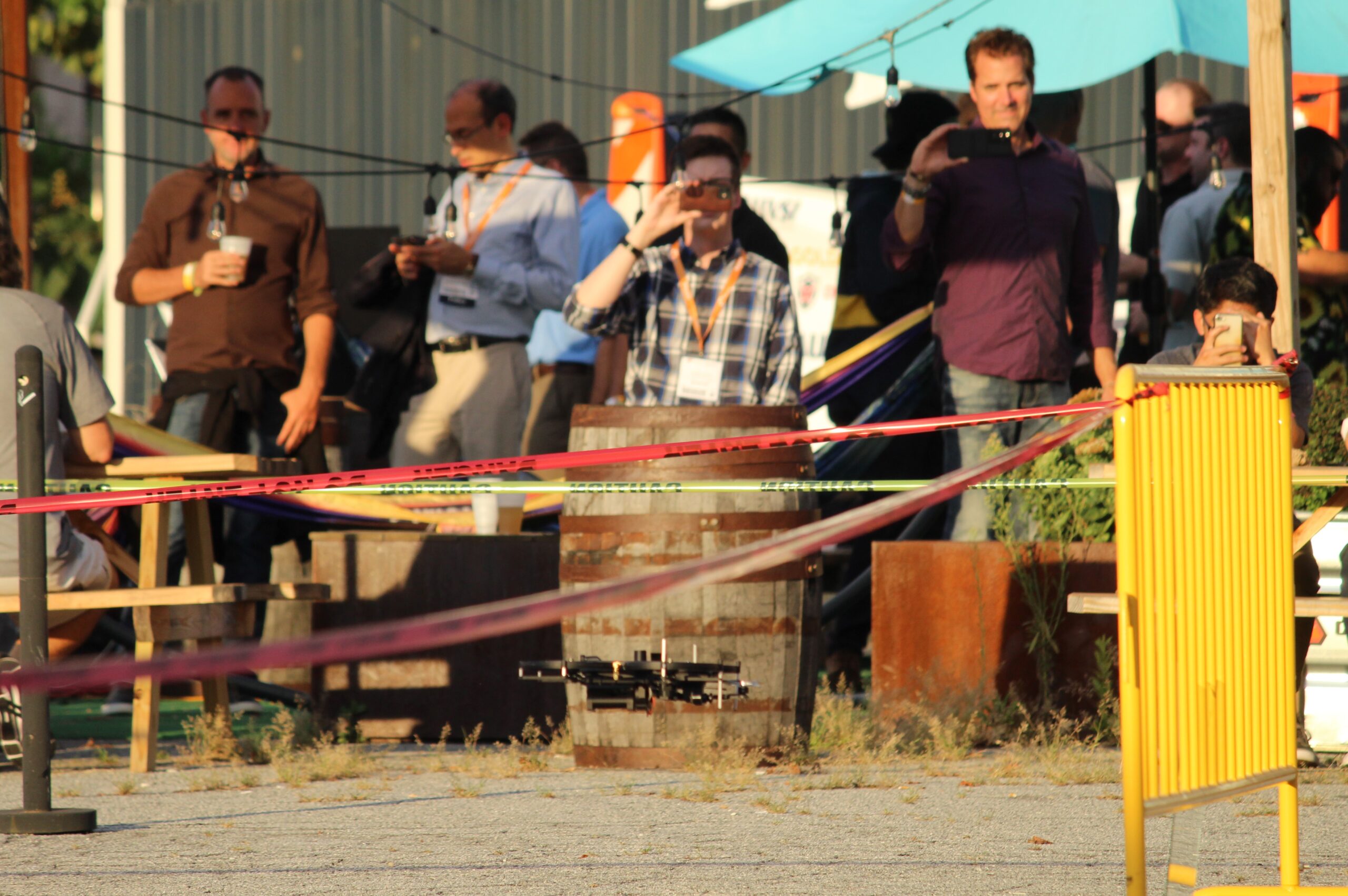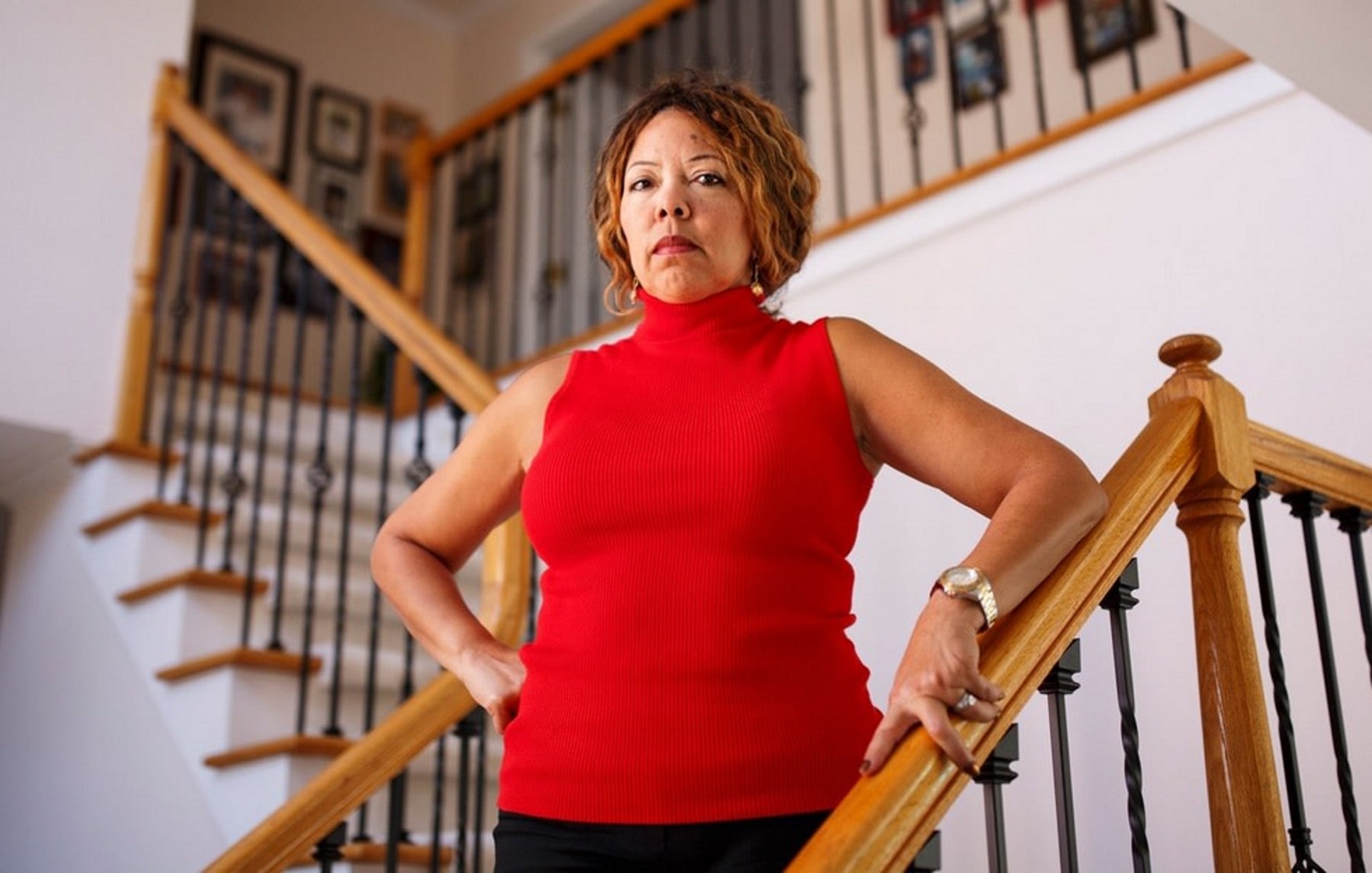Expo Gives Atlanta Up Close Look At The Future of Drones

Onlookers capture video of a drone demonstration during a happy hour connected to an unmanned vehicle trade show in Atlanta
Emil Moffatt / WABE
It’s happy hour at Steady Hand Beer Company on Atlanta’s Westside. Outside in the parking lot, the suds are flowing and the drones are flying.
As dozens of people squint into the sun, Jeremy Epps, a PhD student at Georgia Tech shows off one of the drones he and his classmates designed. It’s built to be resilient as it transports cargo and fights wildfires.
“This also allows you if one of the rotors is to be inoperable, it allows you to fly with five rotors instead of six,” Epps proclaimed over a public address speaker.
The demonstration is organized by the Atlanta Chapter of the Association for Unmanned Vehicle Systems International. It’s the group behind a drone expo being held this week at the Georgia World Congress Center.
Spread out in the massive convention hall, more than 400 exhibitors pedal their products. Among them is drone maker Skydio. CEO Adam Bry, who grew up flying remote control airplanes, is at the company’s booth showing off the Skydio 2 drone.
“So this is our consumer and industry level enterprise product, which has been out for two years. The first thing you’ll notice is that it’s built for autonomy from the ground up,” he said.
The drone, which is about the size of a dinner plate, is outfitted with six navigation cameras: three on top and three on bottom. They help the device fly on its own, which Bry says represents a major shift in the industry.
“It takes weeks, month, sometimes years to become proficient with this stuff,” said Bry. “So, the goal with autonomy is that the drone adapts itself to the user instead of the other way around.”
Regulating Drones
Drones are getting easier to operate and have a lot of uses like taking high-res photos from above disaster sites and traffic crashes. Some companies used specialized cameras to detect methane leaks at oil and gas sites.
Others are deploying drones to deliver packages to homes, using a special waiver from the Federal Aviation Administration. Otherwise, drones aren’t allowed to fly unless the pilot can maintain eye contact with the device. Lisa Peterson, a Vice President with the company Airspace Link, says that’s limited drone deliveries, for now.

“We’re working with some FAA test sites to really advance the industry so it can scale, she said. “The industry will start to scale when we can go beyond visual line-of-sight.”
But that also comes with risk. That’s why Airspace Link has developed a system that will allow commercial drone operators to schedule a flight plan and to make sure they’re complying with all FAA rules. Johns Creek has been selected as the first city in Georgia to test out the new system.
“It’s a matter of trying to figure out how all three of these different use-cases: government, commercial pilots and recreational pilots all integrate into the airspace in a way that is safe and also doesn’t create a nuisance for our residents,” said Nick O’Day, the city’s chief data officer.
‘We Stop Drones’
When drones do become a nuisance, that’s where Max Klein’s company comes in. In an exhibit booth along the main corridor at the convention hall is a big sign with the words “We Stop Drones”. The booth belongs to Klein’s SCI Technology
“We launch a net and the net literally goes around the target, captures it, usually gets entangled in their propellers or other propulsion system and then really kind of wraps around the whole vehicle,” said Klein.
The company’s drone then tows the rogue drone to a designated spot for inspection. It’s a way to maintain order, he says, without endangering those on the ground.

“Part of what allows drones to be used is having a sufficient regulatory and enforcement model around it to ensure that they’re being used safely,” said Klein.
Back at the Skydio booth, Bry says innovations that were only dreamt about seven or eight years ago, are becoming reality.
“I think that’s been the big theme: the industry slowly living into its potential as the products and technology matures,” he said.








